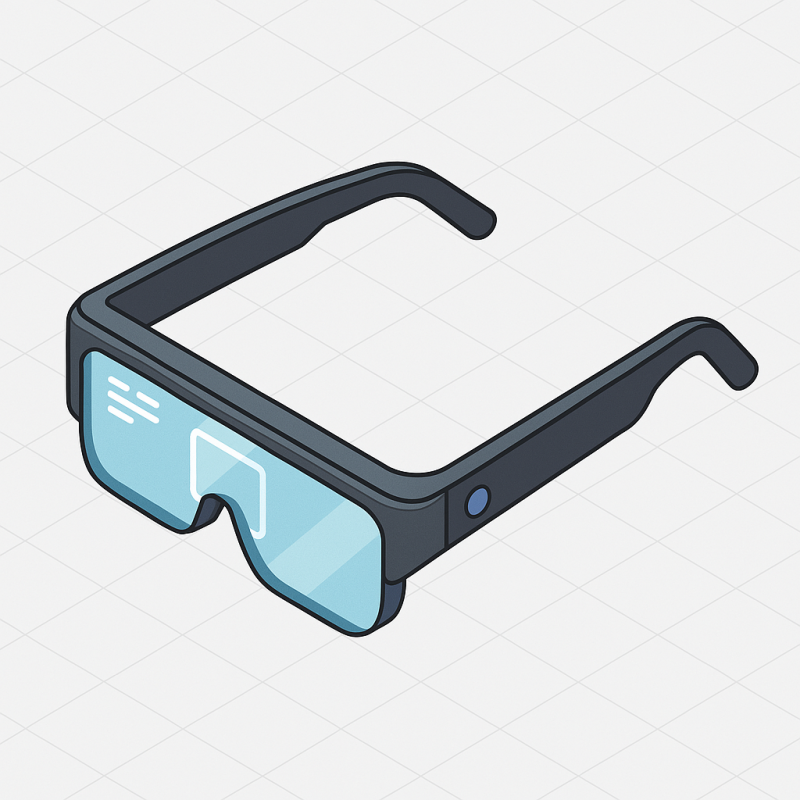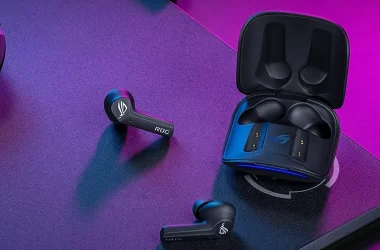Table of Contents Show
Introduction
Augmented Reality (AR) glasses have long been positioned as the next big leap in consumer and enterprise technology. We’ve seen the hype, the prototypes, and the promise: glasses that overlay digital information onto the physical world in real-time, opening up entirely new ways to communicate, collaborate, and experience the environment around us. But hype doesn’t equal adoption.
For more than a decade, tech giants and startups alike have battled to bring AR glasses into the mainstream, and the road has been anything but smooth. From early disappointments like Google Glass to the more recent buzz around Apple’s Vision Pro, AR glasses have generated curiosity and skepticism in equal measure.
Now, with more powerful chips, smaller form factors, and a clearer sense of how AR can actually be useful, the question resurfaces: are AR glasses finally ready to become a regular part of our lives?
In this article, we’ll break down the current state of AR glasses, explore real-world use cases across sectors, examine the technological and social hurdles they still face, and try to answer the question everyone’s asking – are we truly on the verge of an AR revolution?
The Current Landscape: What’s Out There?
AR glasses have evolved dramatically from the clunky, awkward headsets of the 2010s. Modern devices are lighter, smarter, and far more powerful. Let’s look at some of the major players.
1. Microsoft HoloLens 2
Launched in 2019, the HoloLens 2 is widely considered one of the most advanced AR devices available today. It targets enterprise use rather than consumers, and that’s a critical distinction. With features like high-resolution displays, spatial mapping, hand tracking, and voice control, it has found use in industrial training, field repair, and remote collaboration.
Despite its hefty $3,500 price tag, businesses in sectors like healthcare and manufacturing see it as a productivity tool rather than a gadget. For example, surgeons can use it to visualize organs in 3D before procedures, and engineers can use it to overlay instructions on physical equipment.
2. Magic Leap 2
Magic Leap entered the AR scene with a lot of hype and nearly $2 billion in funding. While the first-generation device didn’t live up to its lofty promises, the second iteration is much more refined. Magic Leap 2 is designed for healthcare, manufacturing, and defense industries, offering improved optics, dynamic dimming, and spatial audio.
The company is no longer chasing the consumer market – instead, it’s aiming to solve high-stakes problems in the enterprise world. This pivot is telling: mainstream consumer adoption still feels distant for many AR developers.
3. Nreal (now XREAL) Light and Air
Nreal – now rebranded as XREAL – is one of the few companies targeting consumers directly. Their lightweight AR glasses, such as the Nreal Light and Nreal Air, tether to a smartphone and act as a floating screen. You can watch Netflix, browse the web, or play games on a 130-inch virtual display that follows your gaze.
Priced under $500, they are among the most affordable AR devices on the market. But it’s worth noting these devices lean more toward “mixed media viewers” than fully immersive AR platforms. Still, for many, it’s a gateway into the AR experience.
4. Vuzix Blade
Vuzix is another key player offering smart glasses primarily for enterprise. The Vuzix Blade offers a transparent display, voice control, and camera integration, making it useful in logistics, remote assistance, and inventory management. While not as flashy as other headsets, its practical utility has earned it a niche following.
Potential Applications of AR Glasses
To understand the mainstream potential of AR glasses, you need to look at what they can actually do. The most promising applications span several industries:
1. Healthcare
AR is transforming healthcare in ways that were unimaginable a decade ago. Surgeons can project 3D models of organs during operations. Nurses can receive real-time overlays of patient vitals while administering care. Even physical therapists are starting to use AR to guide patients through recovery exercises.
Startups like Augmedics have developed AR tools that help with spinal surgery by giving surgeons “X-ray vision” through the skin. Medical training also becomes more immersive, with AR providing hands-on learning experiences without the risks of live patients.
2. Education
Education is ripe for AR disruption. Imagine learning about ancient Egypt by walking through a life-sized, AR-rendered pyramid. Or exploring the human circulatory system by stepping inside a beating heart. These aren’t sci-fi scenarios – they’re being piloted in classrooms today.
AR glasses could make learning more interactive, especially for visual and kinesthetic learners. It helps close the gap between abstract concepts and tangible experiences. Tools like zSpace and ClassVR are already laying the groundwork for AR-based learning.
3. Entertainment and Gaming
The gaming industry is one of AR’s most obvious playgrounds. Games like Pokémon GO hinted at the massive potential for blending the digital with the physical. AR glasses could take that to the next level – real-time, location-based combat games, interactive sports coaching, or escape room puzzles layered over your local park.
Beyond games, AR glasses offer new forms of media consumption. Watching a movie on a “virtual” 120-inch screen while sitting on a park bench? That’s the promise from XREAL and others.
4. Retail and Shopping
Retailers are increasingly using AR to let customers try on clothes, glasses, or makeup virtually. But AR glasses could make this even more seamless. Instead of holding up your phone, your glasses could show you how a jacket fits while you’re walking past the store.
IKEA has already developed AR tools to help you visualize furniture in your living room using your phone. With AR glasses, you could redesign your home room by room as you walk through it, without ever lifting a device.
5. Manufacturing, Logistics, and Maintenance
This is perhaps the most practical and immediately profitable use case. Imagine a factory worker receiving visual instructions overlaid on machinery, or a warehouse employee scanning and locating inventory just by looking at it.
AR glasses are being used by companies like Boeing to assist in aircraft assembly, reducing errors and improving efficiency. DHL has experimented with smart glasses to optimize warehouse operations, achieving reported productivity gains of over 15%.
| Industry | Use Case Example | Benefit |
|---|---|---|
| Healthcare | Surgical navigation with 3D organ projections | Increases precision and safety |
| Education | AR-enhanced historical reenactments | Improves engagement and retention |
| Entertainment | AR escape games in real-world locations | Blends physical and digital fun |
| Retail | Virtual clothing try-ons in-store | Boosts conversions, reduces returns |
| Manufacturing | Hands-free work instructions | Reduces errors, increases speed |
Barriers to Mainstream Adoption
Despite all this promise, AR glasses aren’t on everyone’s face yet – and there are some major reasons why.
1. Technological Limitations
Even with years of development, AR glasses still struggle with critical issues:
- Field of view (FoV): Many devices offer a limited FoV, meaning the AR elements can feel like they’re floating in a small window rather than naturally integrated into your environment.
- Battery life: Tethered or not, AR glasses need more juice. Continuous use drains power quickly, and fitting a high-capacity battery into lightweight frames is tough.
- Processing power: To deliver immersive, real-time AR, you need serious hardware – often offloaded to a phone or separate processor unit.
2. Cost
High-end AR glasses like HoloLens 2 or Magic Leap 2 still cost thousands of dollars. That’s fine for industrial applications with clear ROI, but for consumers, it’s a no-go. Even more affordable consumer options hover around $400–$600, still a big leap for something most people view as a novelty.
Mass-market success depends on cracking the price-performance puzzle.
3. User Experience and Comfort
Wearing glasses all day is one thing; wearing bulky, tech-heavy ones is another. The weight, heat generation, and screen brightness all matter. Some users report nausea or eye strain after extended use.
The glasses also need to feel intuitive. If you’re constantly fiddling with voice commands or trying to align objects in your field of view, the experience quickly becomes frustrating.
4. Privacy and Social Acceptance
One of the biggest cultural hurdles is how these devices affect social norms. Will people want to talk to someone wearing AR glasses? Will they feel surveilled?
Google Glass was famously criticized for making wearers look creepy or detached. If tech companies can’t resolve those optics – both literal and metaphorical – AR adoption will stall.
5. Lack of Killer Apps
This might be the most important factor. There is no equivalent of the “iPhone moment” for AR glasses yet. That is, no single use case that makes the device feel indispensable. Until someone builds a compelling, must-have application that only AR glasses can deliver, they’ll remain niche products.
What Needs to Happen Next?
For AR glasses to hit mainstream adoption, several pieces need to fall into place:
- Better Hardware: Smaller, lighter, and more efficient components will make AR glasses less intrusive and more appealing.
- Broader Content Ecosystem: Developers need the tools and incentives to build for AR. That includes SDKs, monetization options, and user bases.
- More Affordable Pricing: As with any tech, volume drives price down. Consumer-grade devices under $300 with compelling use cases could change the game.
- Cross-Platform Compatibility: AR glasses should work with Android, iOS, Windows, and beyond. Seamless integration is essential.
- Strong Privacy Safeguards: Clear, enforced rules about what data AR glasses collect – and who can access it – will go a long way in building trust.
The Apple Factor
Apple’s rumored entrance into the AR glasses market (after the release of its mixed-reality Vision Pro) is one of the most closely watched developments in the industry. Known for turning niche products into mass-market successes, Apple could do for AR glasses what it did for smartwatches and wireless earbuds.
According to Wired, Apple is reportedly working on a lighter AR-focused headset, aiming for a 2025 or 2026 release. If anyone can deliver the killer app and user experience that AR glasses need, it’s Apple.
Conclusion: So, Are AR Glasses Finally Ready?
The short answer? Not quite – but they’re getting closer.
Enterprise adoption is already well underway. In warehouses, hospitals, and factories, AR glasses are proving their worth daily. But the leap from industrial tool to everyday tech accessory is still a work in progress.
For mainstream adoption, we need AR glasses that:
- Look and feel like regular glasses
- Offer tangible daily benefits (not just novelty)
- Are priced within reach
- Work flawlessly with your phone or computer
- Respect privacy and social boundaries
As of now, most AR glasses don’t check all these boxes. But they’re evolving rapidly, and with companies like Apple, Meta, and XREAL continuing to invest, it’s only a matter of time before one device breaks through.
So while AR glasses may not be fully ready for the masses in 2025, the tipping point is on the horizon. And when it hits, it’ll happen fast.
For now, the smart money says: keep watching this space – preferably through a really slick pair of AR glasses.









